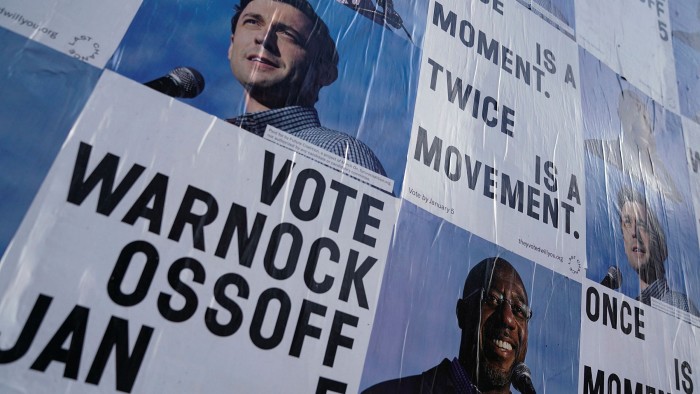Why US rates will continue to remain low for longer

Roula Khalaf, Editor of the FT, selects her favourite stories in this weekly newsletter.
The writer is global head of fixed income research at HSBC
New year market optimism on the economy has been spurred by the Democrats gaining control of the US Senate along with the House of Representatives.
The benchmark 10-year Treasury yield has moved above 1.0 per cent for the first time since March 2020. This has been driven by expectations that the Senate elections in Georgia will pave the way for even greater fiscal stimulus, which will ultimately have to be financed by more bond issuance.
Once again it appears the market consensus is projecting bond yields will move still higher, ending the multi-decade bull run in bonds. By contrast, we believe 2021 will see a continuation of the lower-for-longer theme for interest rates.
First, we are not going to lose sleep over bigger government deficits and the resulting increase in bond supply. The view that more supply means higher yields may be intuitively appealing but it is factually unsound. There is no evidence that supply does drive yields higher. The association between increased debt and yield levels has dominantly been the other way for the past two decades. More debt has been consistent with lower yields in all the major developed markets and even some of the emerging markets.
Second, we would argue that this is caused by the explosion of the debt stock. Many countries now have combined public and private sector debt levels of three to four times gross domestic product. Debt servicing costs are a function of the debt stock and average rate charged on it, so a small upward move in interest rates today has a bigger impact than in past cycles. Higher debt servicing costs deflect cash flow away from investment and consumption.
Third, central banks know excess debt can be a constraint on the future growth of the economy. In 2016, the US Federal Reserve responded to the optimism brought by expected fiscal loosening of the then incoming administration with rate increases and promises of more in the future. Now the Fed and other central banks understand the economy can cope less well with higher rates because of the debt overhang. To put it simply, a 1 percentage point rate rise today may have the impact of a 3 to 4 point increase 20 years ago.
Fourth, the Fed has changed its strategy to focus on forward guidance on policy rates and average inflation targeting. This suggests we will not get a 2016 redux. The Fed says it will be on hold through to 2023 and we think it might be longer. It will take some major shock, in terms of significantly stronger growth, for the Fed to backtrack on this commitment. Some in the market are getting concerned about possible 2013-like tapering — a reduced pace in bond purchases by the Fed. However, that misses the point that the pace of purchases has already been dramatically reduced since its peak last March.
Fifth, a focus on the recent rise in inflation expectations could be misleading. Even if US inflation were to go above 2 per cent for a while, this would still be in line with the Fed’s new targeting policy. What also really matters for rate-setting is the rate of unemployment.
From all of the above, we can see that historical reflation precedents have only limited use in today’s bond market. What really matters to bond yields is the expected path and destination of nominal short-term rates. We know that the Fed expects to keep rates close to zero for three years or longer. And we know the equilibrium for short term rates — when the economy is running not too hot, not too cold — is likely to be lower than the previous cycle. This is because the trend for the real natural rate of interest is for it to keep falling.
To understand falling real rates we must not lose sight of the longer-term secular backdrop. In addition to the overhang of debt weighing on future growth, there are a number of trends that are not going to suddenly disappear. For example, ageing populations require greater savings. This will push more money into bond markets, depressing yields. Greater savings also means less of a consumption boost for the economy. And technological change will continue to have a deflationary impact.
Our lower-for-longer view will be wrong if the new US administration manages to deliver the right policy mix. If fiscal stimulus led to a rapid return to full employment, then the Fed may be faced with the useful “problem” of rising wages and some good inflation.
However, we believe yields in the year ahead will be lower than the current reflation trend and consensus forecasts are anticipating. Ultimately, policies such as quantitative easing and fiscal stimulus are responses to a lack of demand in the economy. Yields will only rise if we find a permanent solution to this problem, rather than a short-term anaesthetic.
Comments